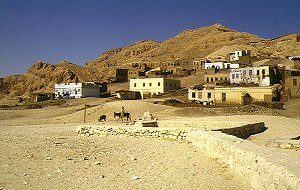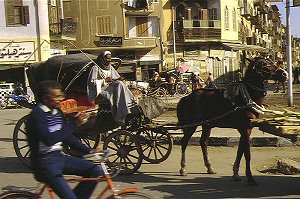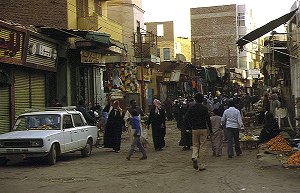Egypt |
Green Strips Besides The Nile
|
|
|
| The farmers in the country never built their villages in the bed of the valley. The fertile soil was too valuable to settle. Therefore the villages lie picturesquely on the mountain slopes. |

|

|

|

|
| Water mostly must be fetched from wells deeper in the valley. This is traditionally the work of the women and children. |

|

|

|

|

|
| Camels were imported frequantly from the south, mainly from the Sudan. This camel herd we met between Luxor and Assuan. |

|

|
| At the hottest time in the early afternoon you can see groups of men everywhere at midday rest. But in spite of modernisation, a woman in such a group -- unthinkable! |

|

|

|

|
| If you visit Egypt, don't miss a sunset at the Nile! |

|

|
| May I recommend you the following interesting books and other informational material: | ||||
|
|
Egypt Home |
|
Land and People, the Nile |
|
Aswan, the dam, Abu Simbel |
|
Luxor, Karnak, the Valley of the Kings |
|
|
Giza, the pyramides, the Egyptian Museum Cairo |
|
The acutal weather in Egypt |
|
Links and Webrings |



















